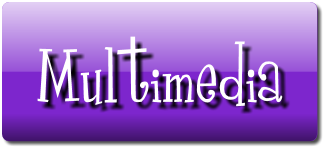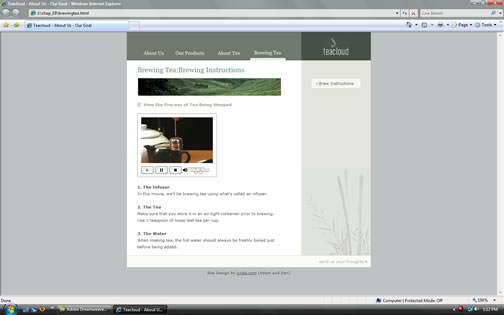
Multimedia is the combined use of several media, as sound and full-motion video in computer applications. Multimedia technology is ever changing, just like computers, and it is important to stay on the cutting edge of technology. By challenging yourself to learn more about the different types of media, you will be a leader in web site design.
The various means of connecting to the Internet include 56K Dial-Up, 1828K ISDN, Cable, DSL, Satellite, and Wi-Fi. There are other means of connecting to the Internet such as T1 but the two chapters we studied did not get into them.
Media that is included on web pages include: MIDI Files, Streaming Video, Streaming Audio, animation, Flash Intros, Loaders, Flash Interface, Flash Movies, Flash Games, Java games, and 3D games. Using these types of media must be carefully planned due to file sizes, fonts, etc.
The key to utilizing interaction on a web site is to stay on top of technological advancements and keep an open mind. It is important to find ways to give Web users what they in want in ways they never expected.
In Review - Page 166 - Exploring Web Design
Multimedia refers to the way medium (information) is delivered. Media is plural for medium. Information that is transmitted can be watching a movie, hearing it and read it if captioning is turned on. It is the combination of text, video, sound, graphics, and animation.
Broadband is a medium which allows multiple data signals to be transmitted at one, increasing the speed of transmission. Dial-up connection is the slowest connection possible on the Internet - 56 kilobits per second, which is really no faster that 53 kilobits, according to the Federal Communications Commission.
A MIDI (Musical Instrument Digital Interface) file replicates the sound of a synthesizer keyboard set to a basic "electronic piano" setting. It is no longer recommended because they are a poor representation of a song. Actual music can be downloaded and transmitted in real time.
Streaming media is a compressed file that loads just as your computer is ready to play it. The audio or video file is broken down into small chunks and then downloaded.
Macromedia Flash is an application that creates web site interactivity. Flash was designed to allow users with low as well as high bandwidth.
Flash Player allows a user to view content created in Flash that can be downloaded for free from the Macromedia web site.
Interactivity is the interaction between you and a web site. You click a link and the web site responds, you are simple interacting and the web site is reacting. This could be as simple as just using the sense of sight by watching a animated Flash Slide show, or more complex by using options in a search query, at lets say, a travel web site.
Flash intros are intended to catch the attention of the user and draw them to your web site. They should be quick, catchy and interesting. Not all users wish to watch a Flash intro so you should provide the option of skipping it. They may be entering you site for quick information or the 15th time and may not want to watch the intro every time.
Loaders hold a user's interest while a web site. downloads. Loaders can be a bar on the screen displaying seconds remaining for the site to completely download or a slide show of images or simple games to play while they wait.
Programming will enhance your skill set and make you more marketable.
ActionScript and Java are programming tools used to develop online games.
3D animation allows a designer to achieve results that aren't possible with traditional Flash animation alone. Big-budge Films are now using 3D graphics to create photorealistic scenery, objects, and even characters that are almost true to life.
I think with the advancement of technology, web design is going to be a very rewarding field to work in. The possibilities will be endless because you enter into many areas of web design that include design, marketing, graphics, 3D animation, etc.
Three reference links for multimedia:
